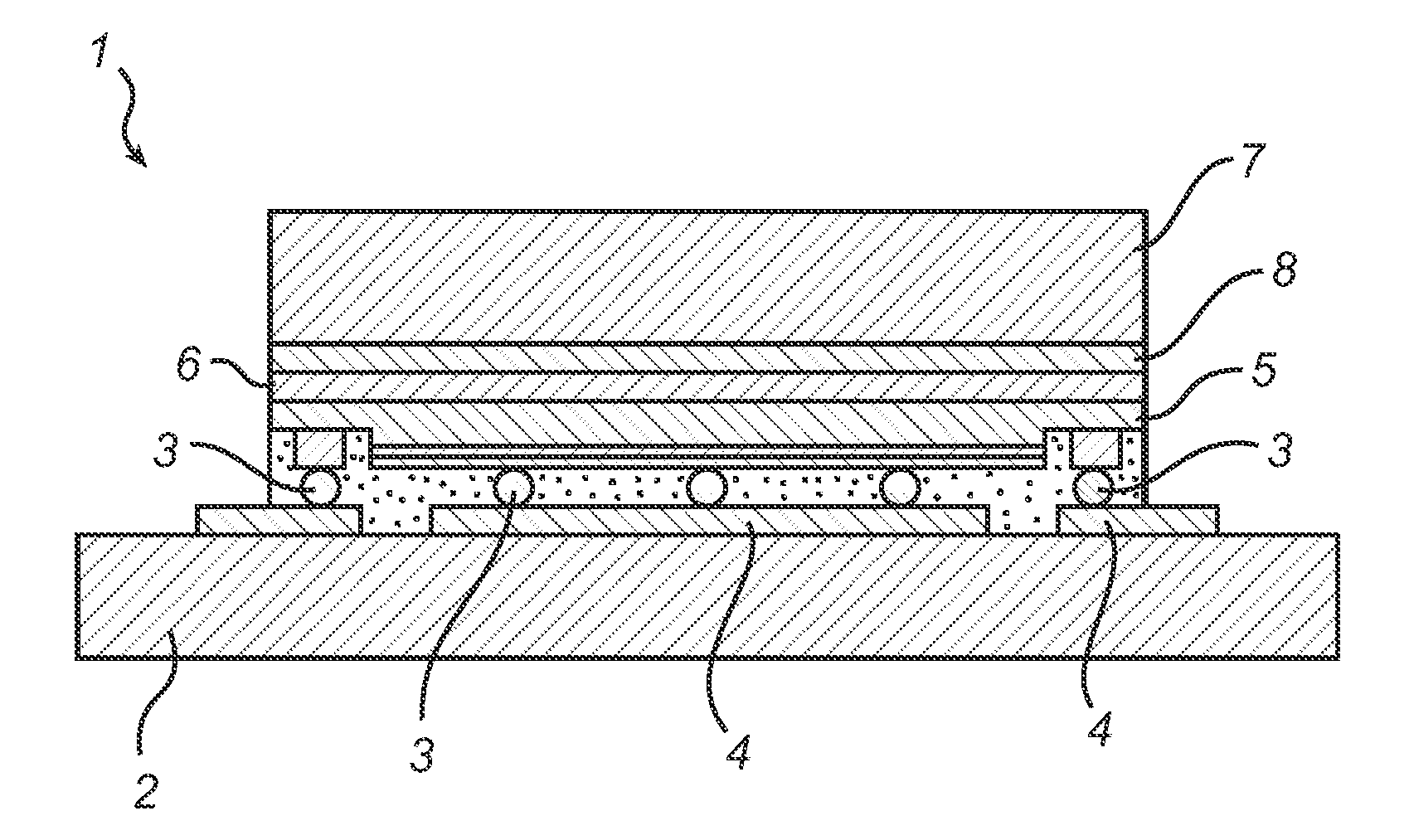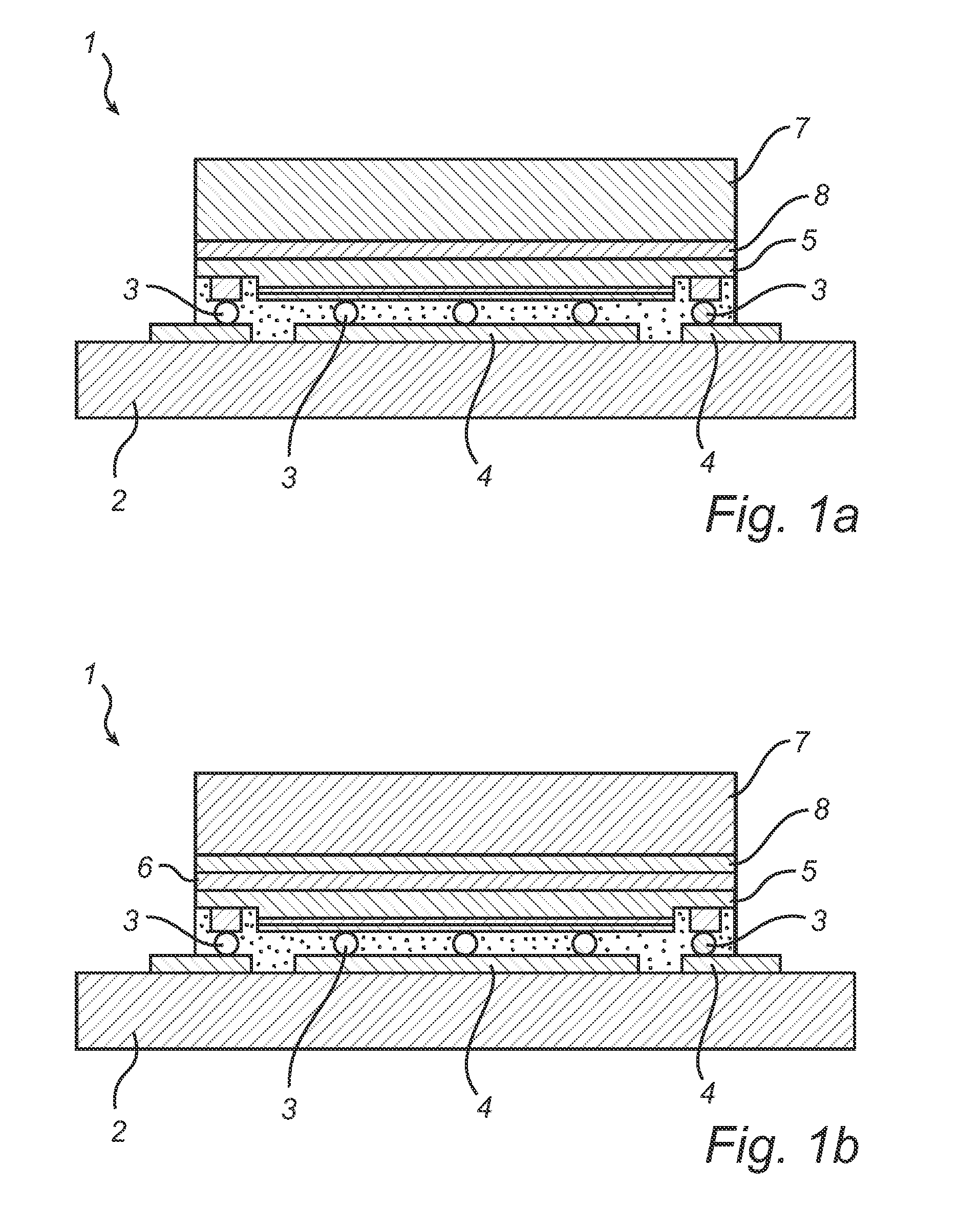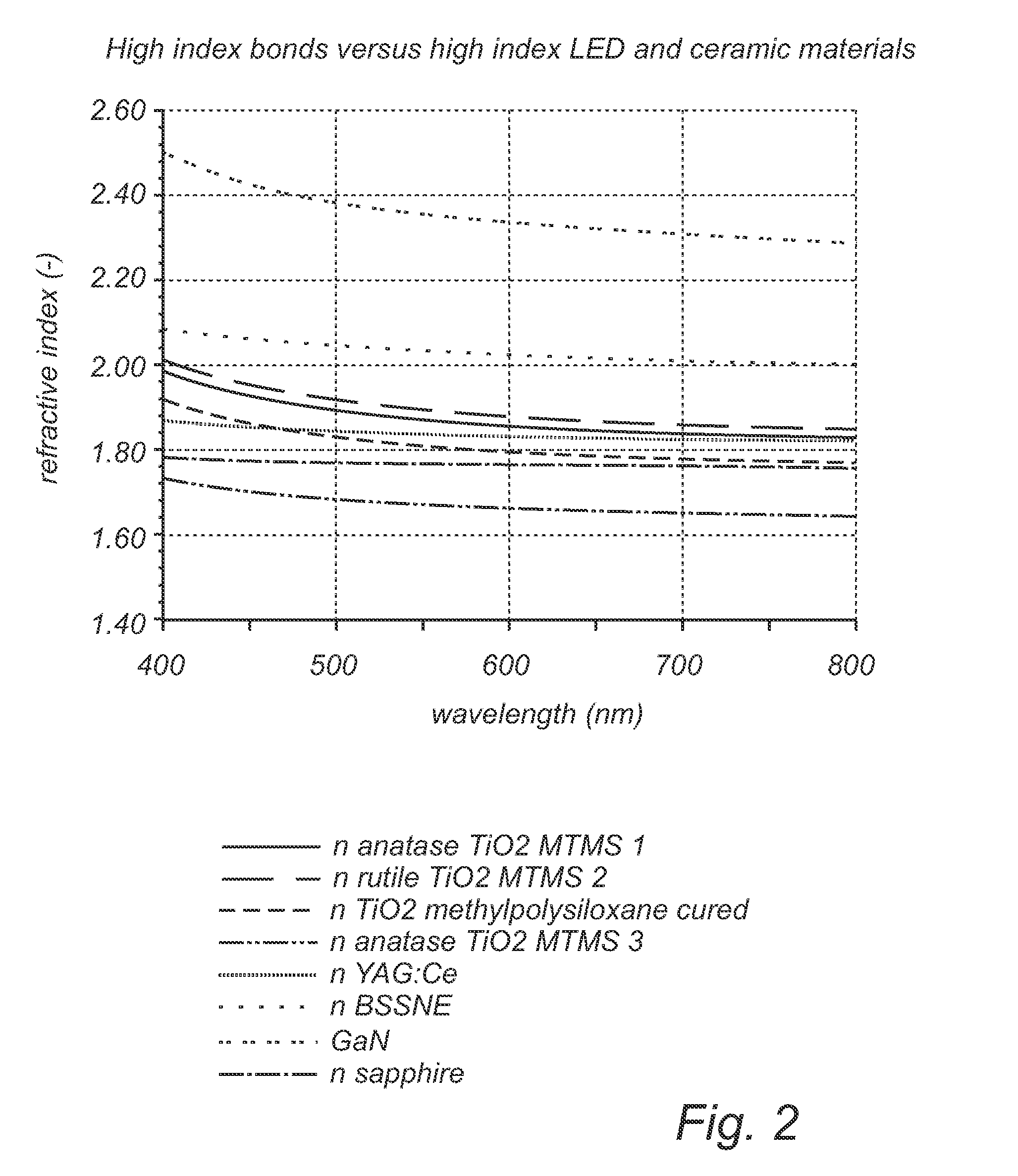Optical composition
a technology of optical composition and illumination device, applied in the direction of optical elements, instruments, non-macromolecular adhesive additives, etc., can solve the problems of limited light extraction and transmission, limited transmission, etc., and achieve the effect of improving light extraction and/or light transmission
- Summary
- Abstract
- Description
- Claims
- Application Information
AI Technical Summary
Benefits of technology
Problems solved by technology
Method used
Image
Examples
examples
Preparation of TiO2 Nanoparticle Filled Metylsilicate Bond
[0087]Methyltrimethoxysilane is added to acidic aqueous dispersions of TiO2 nanopaticles of anatase or rutile type, respectively. Excess solvent is removed by evaporation to increase the viscosity. The resulting adhesive fluid is dispensed on the LED to form a layer and is optionally heater further in order to remove more solvent. Next the optical component to be bonded to the LED is applied to the bonding layer and the layer is dried further and annealed to cure to a solid layer bond, at a temperature in the range of 150-200° C. for 15-60 minutes.
Preparation of TiO2 Nanoparticle Filled Methylpolysiloxane Bond
[0088]A methylpolysiloxane (a silicone resin) was dissolved in a dispersion of TiO2 nanoparticles in isopropanol. Excess solvent was removed by evaporation to increase the viscosity. The resulting composition exhibits reflow properties after coating. It is solid in a dry state at room temperature, and will tackify / fluidi...
PUM
| Property | Measurement | Unit |
|---|---|---|
| particle diameter | aaaaa | aaaaa |
| refractive indices | aaaaa | aaaaa |
| wavelength | aaaaa | aaaaa |
Abstract
Description
Claims
Application Information
 Login to View More
Login to View More - R&D
- Intellectual Property
- Life Sciences
- Materials
- Tech Scout
- Unparalleled Data Quality
- Higher Quality Content
- 60% Fewer Hallucinations
Browse by: Latest US Patents, China's latest patents, Technical Efficacy Thesaurus, Application Domain, Technology Topic, Popular Technical Reports.
© 2025 PatSnap. All rights reserved.Legal|Privacy policy|Modern Slavery Act Transparency Statement|Sitemap|About US| Contact US: help@patsnap.com



